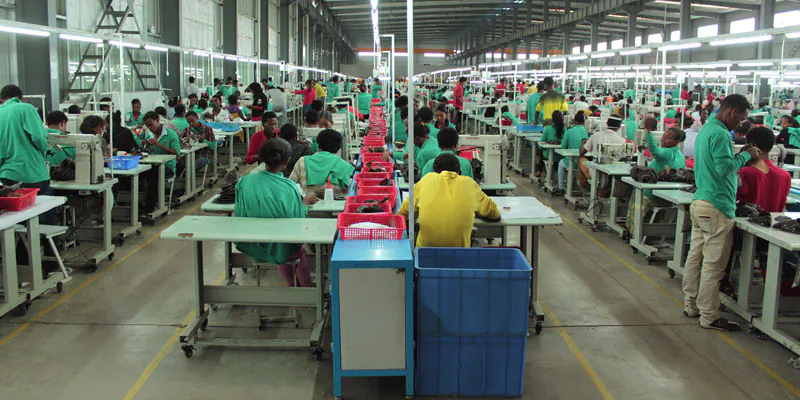Sustainability is a growing concern across industries, and is expected to remain so over the coming years as countries introduce more green initiatives and regulations. Consumers are also demanding sustainable products, with studies finding that a majority of buyers are willing to pay a premium for environmentally friendly goods. Roughly a third of shoppers are actively seeking out sustainably produced goods, making this an important area of focus for manufacturers.
The trend towards sustainability impacts the sugar and confectionery industry from the production of sugar and other sweeteners to the packaging used for finished products. Consumers are increasingly looking at the ingredients and provenance of their sweets with an eye for both health and sustainability, and global efforts to reduce plastics mean that many innovations are being made in recyclable and biodegradable packaging.
Is Sugar Sustainable?
Sugarcane is one of the most-farmed crops in the world, with the food and energy industries consuming 180 million tons of sugar annually. However, this also means that it is a significant source of carbon emissions, with sugarcane agriculture being responsible for approximately 400 million tons of emissions per year. Both sugarcane and sugar beets are water- and land-intensive crops, consuming resources and leading to deforestation as more farmland is created in order to produce them. Reducing sugar consumption is therefore becoming a popular concept from both health and environmental perspectives.
However, it’s not impossible to produce sugar in a more sustainable manner. Brazil, for example, has refined its sugarcane cultivation practices over the years to reduce or eliminate harmful and wasteful processes. The liquid and solid waste generated from sugarcane processing is now used for applications such as energy production, powering the sugar plants and reducing reliance on non-renewable energy sources. Other processes have evolved to be less wasteful and more beneficial to the environment as well.
As for sugar beets, it is possible to repurpose waste products here as well. Sugar producers have already begun using beet pulp—the product that remains after sugar has been extracted from the beets—to produce heat and power that can reduce the industry’s energy usage and decarbonize sugar production. The pulp can also be used for animal feed and other applications.
Research suggests, however, that there may be greater gains to be had from reducing sugar consumption and using sugar beets for ethanol production instead, as it has significant potential as a biofuel. Given the possible benefits to both health and the environment, the confectionery industry may begin to see a greater shift away from sugar, with government initiatives and taxation policies put in place to discourage its use as a sweetener.
The Argument for Alternative Sweeteners
Demand for artificial sweeteners and other sugar substitutes has been growing for some time, driven by the rising popularity of health foods and the prevalence of diet culture. Many consumers are looking to reduce their sugar consumption without giving up on sweets, and with sustainability becoming a greater factor in purchase decisions, alternatives to sugar will become even more popular than before.
Stevia production, for example, has been found to create only 10% as much greenhouse gas as sugar production, making it a much more attractive prospect as countries put sugar under closer scrutiny. It also requires less land and water consumption. As more research is done into the sustainability of sugar substitutes, sugar is likely to become less of a staple in the confectionery industry.
Sustainable Sources
Sugar isn’t the only ingredient impacted by sustainability concerns. The industry is currently seeing a rise in demand for plant-based, ethically sourced products. Despite the pressure of rising inflation, many consumers are still willing to pay a premium for candy bars, gum, and other sweets that promise a lower impact on the environment.
Cocoa in particular is an area where consumers are looking for sustainability and social responsibility. It’s becoming increasingly important to be able to trace the source of cocoa ingredients and show that they’re being produced in a sustainable way, as well as to support the local farmers who are producing them. Buyers are looking for action, not just words—they’re expecting manufacturers to show how their products and processes are benefiting the environment and community.
Chewing gums and jellies are also popular choices for introducing sustainably sourced ingredients. For example, many manufacturers are replacing animal gelatin with plant-based alternatives in order to capture the environmentally conscious segment of the market.
Packaging Innovations
Packaging is an important component of any confectionery product. It needs to protect the item, it needs to be foodsafe, and it needs to be attractive. Doing this sustainably can be a challenge, but manufacturers of packaging and packing machinery are rising to the challenge. Companies are reducing or eliminating their use of plastics and foils, replacing them with coated cardboards that can safely come in direct contact with food. With the right coatings, this cardboard packaging can be fully recycled. Manufacturers are also developing sustainable films made from recycled plastics.
A Sustainable Outlook
As the world becomes more and more environmentally conscious, sustainability is becoming an essential factor in attracting consumers and in meeting government regulations. Plant-based products are expected to become increasingly popular, and sustainable packaging is becoming more readily available. From ingredient sourcing to wrappers, every part of the production process is moving towards a more sustainable future for the sugar and confectionery industry.



